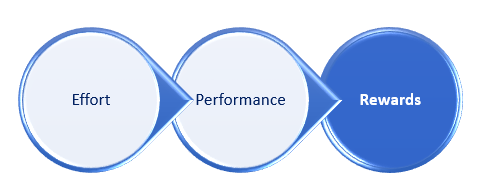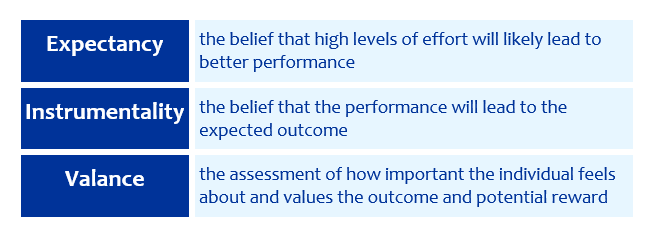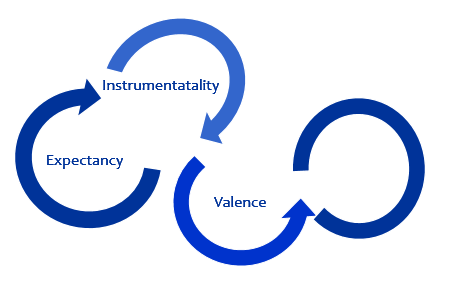Expectancy Theory
The Expectancy Theory proposes that individuals will behave or act in a certain way when they expect positive results from their actions. Essentially, a person chooses their behaviors based on what they believe leads to the most beneficial outcome for them.
About The Expectancy Theory
The expectancy theory was proposed by Victor Vroom in 1964. Vroom’s theory is centered on a person’s motivation and focuses on potential outcomes. His motivation theory states that the intensity of effort depends on an individual’s perception that their effort will result in the desired outcome. He believes that without the prospect of a reward, it is less likely that an individual would exert the effort to perform an extra task. Basically, he believes the motivation of the behavior selection is determined by the desirability of the outcome.
Vroom’s theory is based on the principles of a three-step mental process that explains an individual’s motivation is driven by;
- how likely they think their effort will lead to the expected performance,
- their belief that this performance will lead to an outcome or reward, and
- that the outcome is something they want and value.
Motivation Theory
Expectancy theory works based on an individual’s perception. People need to believe that their effort will lead to an outcome that they want. Individuals will make a conscious choice among alternative behaviors to determine which efforts are worth pursuing and which are not. They make choices based on estimates of how well the expected results of a given behavior are going to match up with or eventually lead to the desired results.
A Cognitive Process
Expectancy theory is about the mental processes regarding making a choice before acting. It explains the processes that an individual undergoes to make choices. The theory is based on the premise that an individual’s motivation with regard to the amount of effort they need to expend is a result of a rational calculation.
Individuals process the different motivational elements before making their eventual choice. The three motivational elements are:
- Expectancy
- Instrumentality
- Valence
Expectancy – the belief that high levels of effort will likely lead to better performance.
Instrumentality – the belief that the performance will lead to the expected outcome.
Valance – the assessment of how important the individual feels about and values the outcome and potential reward.
Three Elements of The Expectancy Theory
As stated above, the expectancy theory explains the process of why someone chooses one behavior over another. In making this conscious choice, there are three elements considered:
- Expectancy
- Instrumentality
- Valence
Expectancy
Expectancy is the individual’s belief that their effort will lead to a successful performance. Expectancy describes the person’s belief that “I can do this.” This belief is typically based on an individual’s confidence, perceived difficulty, and level of control over their performance.
Instrumentality
Instrumentality is the belief that an individual will receive a desired outcome or reward if the performance expectations are achieved. Instrumentality reflects the person’s belief that, “If I do this, I will get that.”
Valence
Valence is the value an individual places on the expected outcome. It’s an individual’s assessment that, “I find this outcome desirable to me”. This typically depends on the individual’s needs, values, goals, preferences, and experience.
Conclusion
Expectancy theory can help you understand how individuals are motivated to choose among various behavioral alternatives. People will work harder if they believe increasing their efforts will improve their performance and lead to greater rewards. So, if you are looking to motivate individuals;
- Create a positive correlation between their efforts and their performance,
- Ensure a successful performance leads to the outcome they expect, and
- Ensure the outcome or reward is something that they value.



